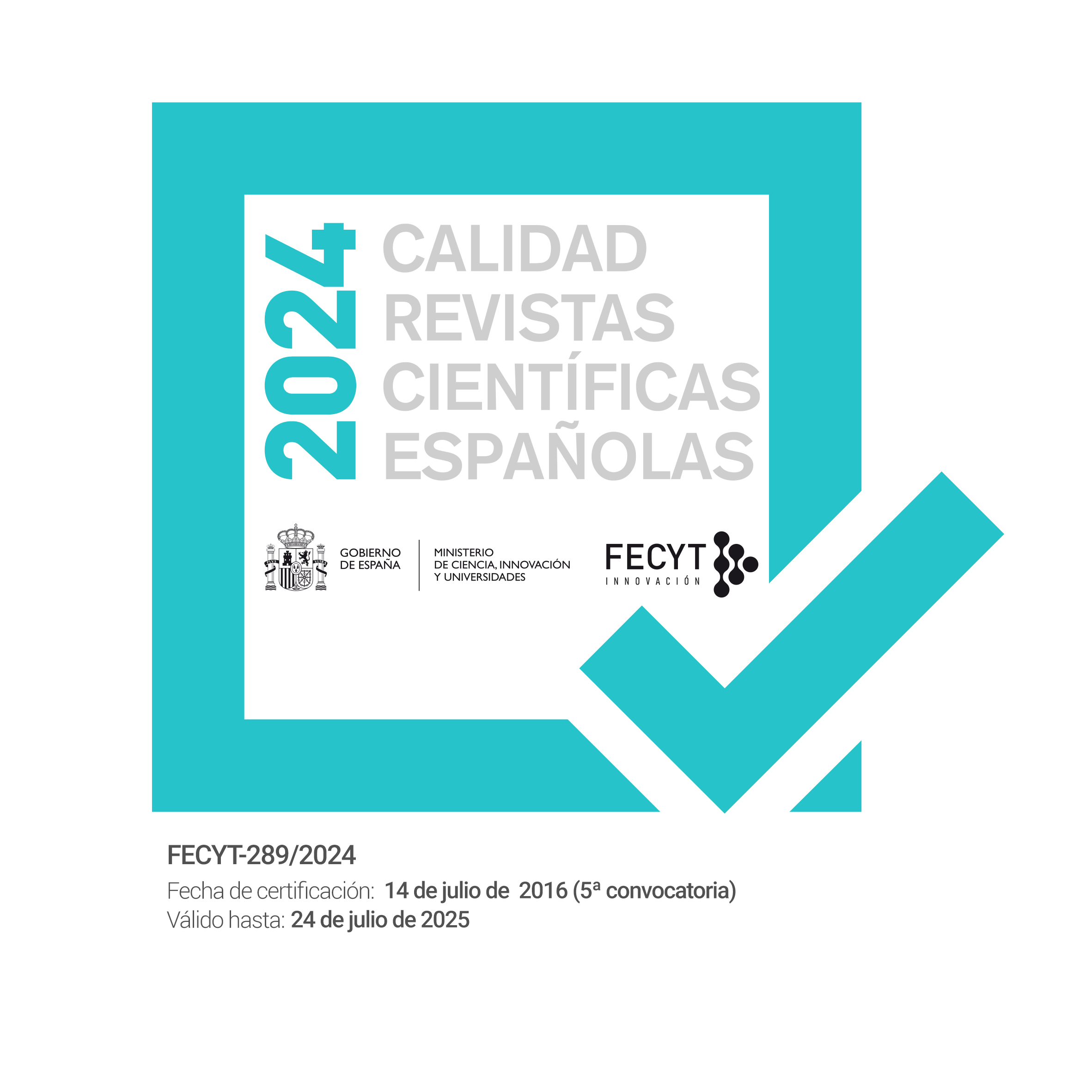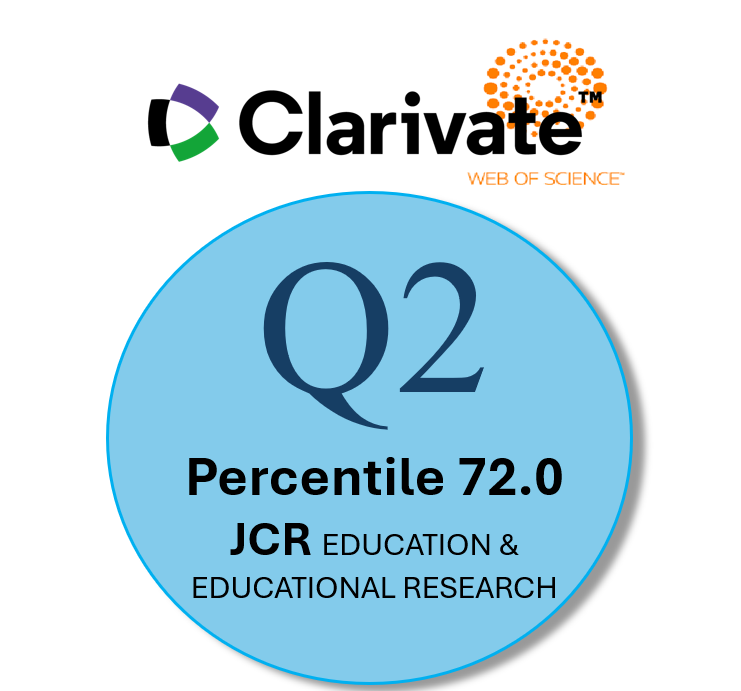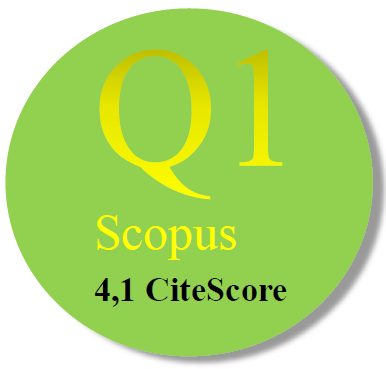Sars CoV 2, an experience of biochemistry in context for teaching concepts associated with proteins
Supporting Agencies
- Universidad Pedagógica Nacional
- CIUP
Abstract
This article shows the results of a didactic intervention in the field of teaching biochemistry in context, to teach some concepts associated with proteins. The participants were fourteen students enrolled in the Bachelor of Chemistry program of the National Pedagogical University, with whom the subject of COVID 19 was worked, and emphasis was placed on the proteins of the coronavirus Sars CoV 2, to teach concepts such as amino acids, peptide bond, proteins, primary, and secondary protein structures. Thus, activities such as explanatory videos of the coronavirus, readings of academic articles on the structure of the virus, lectures, as well as the use of bioinformatics tools to design and predict protein structures were carried out. The academic performance of the students was evaluated through mental maps, initial and final questionnaires, as well as an essay. As a result, it could suggest that the use of these didactic tools, applied in the context of the pandemic, improves academic performance, assimilation of new concepts, and increases the interest by learning new topics.
Downloads
-
Abstract1038
-
PDF (Español (España))1125
References
Badotti, F., Barbosa, A., Martins, A., Do Valle, Í., & Mainá, L. (2014). Comparative Modeling of Proteins: A Method for Engaging Students Interest in Bioinformatics Tools. Biochemistry and Molecular Biology Education, 42(1), 68-78.
Berman, H., Westbrook, J., Feng, Z., Gilliland, G., Bhat, T., Weissig, H., . . . Bourne, P. (2000). The Protein Data Bank. Nucleic Acids Research, 28(1), 235-242.
Berry, C., & Baker, M. (2010). Multimedia in Biochemistry and Molecular Biology Education. Biochemistry and Molecular Biology Education, 38(6), 425-429.
Boyd-Kimball, D., & Miller, K. (2018). From CookbooK to Research: Redesigning and Advanced Biochemistry. Journal of Chemical Education, 95(1), 62-67.
Buchan, D., & Jones, D. (2019). The PSIPRED Protein Analysis Workbrench: 20 Years on. Nucleic Acids Research, 47(W1), 402-407.
Chemaxon. (1998). Chemaxon. Recuperado el 30 de January de 2020, de https://chemaxon.com/
Chen, C., Chang, C. K., Chang, Y. W., Sue, S. C., Bai, H. I., Riang, L., . . . Huang, T. H. (2007). Structure of the Sars Coronavirus Nucleocapsid Protein RNA-Binding Dimerization Domain Suggests a Mechanism for Helical Packaging of Viral RNA. Journal of Molecular Biology, 368(4), 1075-1086.
Cookmeyer, D., Winesset , E., Kokona, B., Huff, A., Aliev, S., Bloch, N., . . . Charkoudian, L. (2017). Uncovering Protein-Protein Interactions Througha Team-Based Undergraduate Biochemistry Course. Plos Biology, 15(11), 1-13.
Dallakyan, S., & Olson, A. (2015). Small-molecule Library Screening by Docking with PyRx. Methods in Molecular Biology, 1263, 243-50.
Dorfman, B., Terrill, B., Patterson, K., Yarden, A., & Blonder, R. (2019). Teachers Personalize Videos and Animations of Biochemical Processes: Results from a Professional Development Workshop. Chemistry Education Research and Practice(4), 772-786.
Fardilha, M., Schrader, M., da Cruz e Silva, O., & da Cruz e Silva, E. (2010). Understanding Fatty Acid Metabolism Trought an Active Learning Approach . Biochemistry and Molecular Biology Education, 38(2), 65-69.
Kim, S., Chen, J., Cheng, T., Gindulyte, A., He, J., He, S., . . . Bolton, E. E. (2019). PubChem 2019 Update: Improved Access to Chemical Data. Nucleic Acids Research, 47(D1), D1102-D1109.
Kleywget, G., & Jones, A. (1996). Phi/Psi-chology: Ramachandran revisited. Ways & Means, 4(12), 1395-1400.
Koch, I., & Fuellen, G. (2008). A Review of Bioinformatics Education in Germany. Briefings in Informatics, 9(3), 232-242.
Lang, F., & Bodner, G. (2020). A Review of Biochemistry Education Research. Journal of Chemical Education, 97(8), 2091-2103.
Linenberger, K., & Bretz, S. (2014). Biochemistry Students´Ideas About Shape and Charge in Enzyme-Substrate Interactions. Biochemistry and Molecular Biology Education, 42(3), 203-212.
Lohning, A., Hall, S., & Dukie, S. (2019). Enhancing Understanding in Biochemistry Using 3D Printing and Cheminformatics Technologies: A Student Perspective. Journal of Chemical Education, 96(11), 2497-2502.
Macaulay, J., Van Damme, M., & Walker, K. (2009). The Use of Contextual Learning to Teach Biochemistry to Dietetic Students. Biochemistry and Molecular Biology Education , 37(3), 137-143.
Michael, J. (2006). Where´s the Evidence that Active Learning Works? Advances in Physiology Education, 30(4), 159-167.
Mutlu, A. (2018). Comparison of Two Different Techniques of Cooperative Learning Approach: Undergraduates´Conceptual Understanding in the Context of Hormone Biochemistry. Biochemmistry and Molecular Biology Education, 46(2), 114-120.
Nagaiah, B., Gowda, V., & Jeyachristy, S. (2014). Motivating First Year Medical Students to Learn Biochemistry by Case Based Learning. International Journal of Biomedical Research, 5(7), 461-464.
Rodríguez , J., Hux, N., Philips, S., & Towns, M. (2019). Michaelis - Menten Graphs, Lineweaver-Burk Plots, and Reactions Schemes: Investigating Introductory Biochemistry Students´Conceptions of Representations in Enizyme Kinetics. Journal of Chemical Education, 96(9), 1833-1845.
Rodríguez, R. (2018). The Learning Models of Kolb, Honey and Mumford: Implications For Science Education. Sophia, 14(1), 51-64.
Rodriguez, R., Casas, J., & Martínez, D. (2020). Laboratorio de Química Bajo Contexto: Insumo para el Desarrollo de Habilidades de Pensamiento Crítico. Tecné, Episteme, Didaxis(47), 33-52.
Romero, R., Espinosa, L., & Ramírez, D. (2019). Organic Chemistry Basid Concepts Teaching in Students of Large Groups at Higer Education and Web 2.0 Tools. Actualidades Investigativas en Educación , 19(1), 1-31.
Rowe, L. (2017). Green Fluorescent Protein-Focused Bioinformatics Laboratory Experiment Suitable for Undergraduates in Biochemistry Courses. Journal of Chemical Education, 94(5), 650-655.
Schönborn, K., & Anderson , T. (2006). The Importance of Visual Literacy in the education of Biochemists. Biochemistry and Molecular Biology Education , 34(2), 94-102.
Smith, J., Harris, J., López, O., Valverde , L., & Borchert, G. (2015). "On the job" Learning: A Bioinformatics Course Incorporating Undergraduates in Actual Research Projects and Manuscripts Submissions. Biochemistry and Molecular Biology Education, 43(3), 154-161.
Stasinakis, K., & Despoina, N. (2017). Modeling of DNA and Protein Organization Levels with Cn3D Software. Biochemistry & Molecular Biology Education, 45(2), 126-129.
Sun, J., Tang, Y., Sa, R., & Gao, Y. (2019). Predicting and Visualizing 5S rRNA Structures Using Bioinformatics Tools to Help Students Learn RNA Structure and Function while Gaining Computer Research Skills. Journal of Chemical Education, 96(11), 2611-2616.
Vaughan, N. (2007). Perspectives on Blended Learning in Higher Education. International Journal on E-Learning, 6(1), 81-94.
Wheeler, L., Maeng, J., & Whitworth, B. (2015). Teaching Assintants´Perceptions of a Training to Support an Inquiry-Based General Chemistry Laboratory Course. Chemistry Education Research and Practice(16), 824-842.
Xia, S., Liu, M., Wang, C., Xu, W., Lan, Q., Feng, S., . . . Lu, L. (2020). Inhibition of SARS-CoV-2 (Previously 2019-n Cov) Infection by a Highly Potent Pan-coronavirus Fusion Inhibitor Targeting its Spike Protein that Harbors a High Capacity to Mediate Membrene Fusion . Cell research(30), 343-355.
Zardecki, C., Dutta, S., Goodsell, D., Voigt, M., & Burley, S. (2016). RCSB Protein Data Bank: A Resource for Chemical, Biochemical, and Structural Explorations of Large and Small Biomolecules. Journal of Chemical Education, 93(3), 569-575.
Copyright (c) 2021 Distance Education Journal

This work is licensed under a Creative Commons Attribution-NonCommercial 4.0 International License.
Las obras que se publican en esta revista están sujetas a los siguientes términos:
1. El Servicio de Publicaciones de la Universidad de Murcia (la editorial) conserva los derechos patrimoniales (copyright) de las obras publicadas, y favorece y permite la reutilización de las mismas bajo la licencia de uso indicada en el punto 2.
2. Las obras se publican en la edición electrónica de la revista bajo una licencia Creative Commons Reconocimiento-NoComercial-SinObraDerivada 3.0 España (texto legal). Se pueden copiar, usar, difundir, transmitir y exponer públicamente, siempre que: i) se cite la autoría y la fuente original de su publicación (revista, editorial y URL de la obra); ii) no se usen para fines comerciales; iii) se mencione la existencia y especificaciones de esta licencia de uso.
3. Condiciones de auto-archivo. Se permite y se anima a los autores a difundir electrónicamente las versiones pre-print (versión antes de ser evaluada) y/o post-print (versión evaluada y aceptada para su publicación) de sus obras antes de su publicación, ya que favorece su circulación y difusión más temprana y con ello un posible aumento en su citación y alcance entre la comunidad académica. Color RoMEO: verde.













